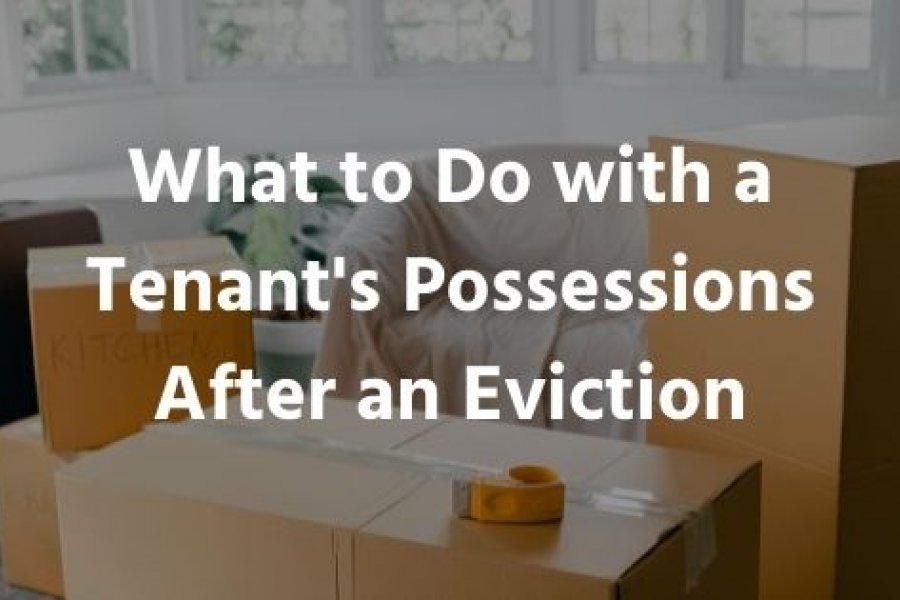How To Start A Residential Evictions Personal Belongings Aquisition Service Company

Starting and Operating a Residential Eviction & Personal-Property Acquisition Service
*Notice: The following information is based on the laws here in Kentucky. The laws are pretty much the same in most states around the nation concerning the acquisition of personal belongs, however, still check the requirements in your own state.
Building a business that handles both tenant evictions and the acquisition, removal, storage, and disposition of tenant belongings involves navigating landlord–tenant law, licensing, logistics, and risk management. Below is a comprehensive playbook tailored for Kentucky (Louisville), though many principles apply nationwide.
1. Define Your Service Offering
- Eviction Processing • Draft, serve, and file notices (e.g., 7‐day pay-or-quit for nonpayment). • Prepare court filings and appear at hearings. • Coordinate writs of possession and lock-outs via law enforcement or court officers.
- Property Removal & Inventory • On writ execution, remove tenant belongings to a secure facility. • Itemize and photograph everything removed (chain of custody).
- Storage & Lien Management • Store belongings in a bonded warehouse. • Issue tenant notice of right to reclaim and storage fees (per UCC lien rules).
- Disposition & Sale • After statutory notice period, sell or dispose of unclaimed items. • Apply proceeds against service & storage fees; refund any surplus.
- Add-On Services • Lock changes, deep cleaning, minor repairs, carpet cleaning. • Key safekeeping, record retrieval.
2. Legal & Regulatory Framework
A. Kentucky Eviction Law
- Grounds & Notices: – Nonpayment: 7-day notice to pay or vacate. – Other breaches: 14–30-day cure notices depending on violation.
- Filing & Hearing: Landlord files a Forcible Detainer action in District Court.
- Writ of Possession: Issued post-judgment; only law enforcement can change locks and remove occupants.
B. Louisville–Jefferson County Code
Metro has adopted the Uniform Residential Landlord & Tenant Act. Key points:
- Security Deposits & Fees: Limits on amounts and timelines for return.
- Personal Property Handling: Must give written notice before disposing of tenant goods; timelines vary (often 15–30 days).
C. Federal Constraints
-
- Discrimination: Do not discriminate based on race, gender, disability, family status, etc.
- Fair Debt Collection: Comply with FDCPA when collecting unpaid rent or fees.
3. Business Formation & Licensing
- Entity Registration – Form an LLC or corporation with the Kentucky Secretary of State. – Obtain Federal EIN.
- Local Permits – Check Louisville zoning for warehouses. – Business‐occupational license with Jefferson County.
- Professional Licensing – Process Servers: In some counties, eviction notices must be served by licensed process servers. – Moving Broker: In KY, intrastate movers generally don’t need a PUC authority, but out-of-state work triggers FMCSA/motor‐carrier regs.
- Bonding & Insurance – General Liability: On-site and warehouse coverage. – Errors & Omissions: For legal/process mistakes. – Bailee/Storage: Covers tenant property damages while in your custody.
4. Operational Workflows
A. Intake & Scheduling
- Landlord signs service agreement; you gather lease, prior notices, and check local cure periods.
- Schedule notice service, court dates, and physical lockout.
B. Notices & Court Actions
- Draft and serve statutory notices (pay or quit, cure or quit).
- File summons on non-response; coordinate with counsel if necessary.
C. Execution Day
- Coordinate with sheriff/magistrate for lockout.
- Remove items: two‐person crew, standard equipment (dollies, blankets, padlocks).
- Photograph & catalog each item.
D. Storage & Customer Communications
- Immediately tag and warehouse items.
- Send tenant certified mail: inventory, fees, redemption deadline.
E. Disposition
- After notice window, hold a public sale or arrange donation/salvage.
- Document sale proceeds vs. fees; handle surplus or deficiency per law.
5. Staffing & Facilities
- Key Roles – Legal/Paralegal: Prepares filings and notices. – Process Server: Service of documents. – Removal Crew: Skilled movers, background-checked. – Warehouse Manager: Oversees storage, security, inventory.
- Facilities & Equipment – Secure, climate-controlled warehouse. – Parking/loading zone for removal vans. – IT: cloud case-management, digital photo storage.
6. Pricing & Revenue Streams
- Flat Fees – Notice drafting/serving – Filing/Court appearance – Lockout execution
- Hourly Labor & Truck – Standard mover‐crew hourly rate + mileage/truck fee.
- Storage & Lien – Daily or weekly storage charge. – Disposal/sale coordination fee.
- Ancillary – Cleaning/repair add-ons. – Emergency or after-hours premium.
7. Marketing & Client Acquisition
- Target Clients: – Landlords/Property managers – HOA boards – Real-estate investors
- Channels: – Local bar associations & eviction attorneys – Property-management conferences – Google Ads/Search (e.g., “Louisville eviction service”)
- Reputation: – Online reviews (Yelp, Google) – Case studies: “X evictions served, $Y stored items returned”
8. Risk Management & Compliance
- Standard Operating Procedures: Checklists for every step.
- Legal Audits: Quarterly review of compliance with KRS 383 and Metro Code 151.
- Customer Contracts: Limit liability, clarify lien rights, disclaim storage-fee liability if tenant can’t be reached.
9. Technology & Efficiency
- Case Management Software: Tracks notices, filings, court dates, lockouts.
- Warehouse Management System: Barcode tagging, shelf tracking, storage billing.
- Mobile Apps: Digital signature capture, photo timestamping.
10. Financial Planning
- Startup Costs: – Vehicles & equipment – $20K–$50K – Leasehold improvements/warehouse – $10K–$30K – Legal, licenses, insurance – $5K–$15K
- Ongoing Expenses: – Wages, fuel, facility rent, insurance, marketing.
- Revenue Goals: – Break-even: ~10–15 evictions/mo + storage fees. – Profit: upselling cleaning/repairs, high-volume property managers.

Further Resources & Next Steps
- Dive into the Uniform Residential Landlord & Tenant Act (KRS 383.500–.705) to refine notice templates.
- Review the Louisville Metro Landlord–Tenant Code (Ch. 151) for local disposal timelines.
- Explore process-server certification programs in Kentucky.
- Partner with local movers to handle overflow jobs.
By structuring your company around clear legal workflows, robust operations, and targeted marketing to landlords and property managers, you’ll build a scalable eviction & personal-property acquisition service that stands up to regulatory scrutiny and delivers reliable, repeat business.
Here’s a roadmap to building a niche eviction-related business that specializes in acquiring, storing, and liquidating tenants’ personal property after residential evictions:
- Deep-dive into local eviction and abandoned-property law
- In Kentucky, a landlord must follow specific notice periods (e.g. 7-day pay-or-quit, 14-day cure or quit) before filing for eviction.
- Once a court orders possession, you’ll handle “abandoned” belongings. State law typically requires you to: store items safely for a minimum period, notify the former tenant in writing of their rights, and only after that window sell, donate, or dispose of unclaimed items.
- Define your service offering and value proposition
- Full-service eviction support: paperwork prep, lockouts in coordination with law enforcement, property inventory.
- Post-eviction haul-away: pack, transport and catalog items.
- Secure storage: short-term warehousing to meet statutory hold-period requirements.
- Liquidation: on-site auctions, third-party resale channels, or bulk buyouts.
- Collections: pursue sale proceeds and back-rent judgments on landlords’ behalf.
- Write a business plan and choose your structure
- Estimate startup costs: moving van or box truck, warehouse/storage rental, shelving, packing materials, uniforms, basic software (scheduling, invoicing, chain-of-custody logs).
- Decide on entity (LLC, S-Corp, etc.), register with the Kentucky Secretary of State, and secure local business licenses.
- Obtain a surety bond (often required for “bailment” businesses holding customer property) and general liability insurance.
- Project pricing: consider à la carte fees (e.g. $X per cubic foot removed; $Y per day storage) plus bundled packages for end-to-end service.
- Build compliant operations and SOPs
- Chain-of-custody documentation: intake checklists, digital photos, signed receipts for every eviction job.
- Written tenant notifications: template letters offering retrieval options and outlining storage/disposal timelines.
- Warehouse protocols: secure, climate-controlled zones, locked cages, inventory management system.
- Disposal/liquidation channels: cultivate relationships with auctioneers, thrift stores, online marketplaces.
- Network with referral partners
- Landlords and property managers—many would rather outsource the headache of post-eviction clean-out and auction.
- Eviction attorneys and process-servers—they can bundle your services into their flat-fee eviction packages.
- Local law enforcement—coordinate lockouts in accordance with court orders.
- Trade associations like the National Apartment Association (NAA) to stay on top of evolving landlord-tenant law and meet potential clients.
- Market your new company
- Hyperlocal SEO: “Louisville eviction cleanout,” “Kentucky abandoned property removal.”
- Google My Business + Yelp listings with before/after photos and client testimonials.
- Direct outreach: letter drops or email campaigns to landlords’ associations and property-management firms.
- Sponsor landlord/real-estate meetups or CE-credit classes for property managers.
- Launch, refine, and scale
- Start with a handful of clients to fine-tune pricing, timing, and operations flow.
- Collect case studies and reviews—illustrate cost savings vs. in-house handling.
- Automate scheduling and billing as you grow: invest in a CRM that tracks job status, storage inventory, tenant notices, and sale proceeds.
- Expand regionally or vertically (e.g., pocket offices in surrounding counties; add foreclosure REO clean-out).
— Something else you’ll want to explore next: the specific record-keeping and disposal deadlines for unclaimed goods in Louisville/Jefferson County, and whether fire-code or insurance regulations impose extra storage requirements on your facility.

How To Charge Fees And Cost To Sellers Of Personal Belongings To Your Residential Eviction’s Personal Belongings Aquisition Service Company?
Here’s a proven fee-model framework you can adapt. Think of your charges in four buckets—Removal, Storage, Liquidation, and Admin—and then layer in minimums, tiers, and penalties so you’re covered on every job.
- Removal (Haul-away) Fee • Base price (covers labor + truck): e.g. $200 for the first 200 cu ft or up to 2 man-hours • Overage: $1.50–$2.50 per additional cu ft OR $50 per extra man-hour • Minimum charge: $150 (so a small job still covers your mobilization costs) • After-hours/weekend premium: +25–50%
- Storage Fee • Tiered per-cubic-foot: – Days 1–7: $0.50/cu ft/day – Days 8–30: $1.00/cu ft/day – 30+ days: $1.50/cu ft/day (or move to “long-term” zone with a flat $2.00/cu ft/day) • Minimum daily fee: $25/item (so tiny boxes don’t slip under the radar) • Late-pickup penalty: +50% of the daily rate starting day 31
- Liquidation (Sales & Disposal) Fee • Commission on gross sale proceeds: 25–35% (typical auctioneers run 20–25%, but you add value via pick-up, storage, certification) • Minimum commission: $50 per lot (even if it only fetches $100) • “No-sale” disposal surcharge: if an item fails to sell or is trash, charge a flat $75–$150 disposal fee per load • Third-party channel fee: if you list on eBay, Facebook Marketplace, etc., pass through actual listing/shipping costs + 10% handling
- Administrative/Compliance Fee • Chain-of-custody bundle: $25 per eviction package (covers notices, photos, inventory logs) • Bailment bond & insurance surcharge: 2–5% of total invoice (recoup your bonding/insurance cost) • Title-search & mailing fee: $10 per certified letter to former tenant
Putting it together (sample invoice)
| Item | Qty | Unit Charge | Total |
|---|---|---|---|
| Removal – first 200 cu ft | 1 job | $200 | $200 |
| Removal – 50 cu ft overage | 50 cu ft | $1.75/cu ft | $87.50 |
| Storage – 1–7 days | 250 cu ft | $0.50/cu ft/day × 7 d | $875 |
| Storage – 8–30 days | 250 cu ft | $1.00/cu ft/day × 23 d | $5,750 |
| Liquidation (30% of $4,000) | — | 30% of gross proceeds | $1,200 |
| Admin/Compliance bundle | 1 job | $25 | $25 |
| Bond & Insurance surcharge | — | 3% of subtotal | $233.63 |
| Grand Total | — | $8,371.13 |
Pricing tips: • Anchor clients on a “Total Turnkey” package (e.g. $X per cu ft all-in) versus à la carte. • Offer volume discounts for multi-unit builds or property-manager contracts. • Require a 30% deposit on jobs over $1,000 to cover rapid-response labor. • Always spell out “unclaimed proceeds” terms: what happens if tenants come back for money.
Next up, you’ll want to: • Model your cost of labor, fuel, & warehouse space so every fee nets you 30–40% margin. • Draft clear T&Cs that tie each fee to a specific service milestone (pickup, storage period, sale). • Pilot your price list on 5–10 small jobs, tweak based on actual hours + storage days, then lock down your standard rate card.

What Legal Considerations Should I keep In Mind When Charging Fees?
How To Market A Residential Eviction Personal Belonging, Aquisition Service Company
Here are the biggest hurdles you’ll face when launching an eviction & tenant-belongings service:
- Complex Legal & Regulatory Landscape You must master federal, state and local landlord-tenant statutes, plus municipal rules on personal‐property liens, notice periods, warehousing and disposal. Even small missteps—wrong notice form or missed cure window—can expose you to lawsuits or treble-rent penalties.
- Heavy Administrative Burden Though it looks like a “moving” business, roughly 80 percent of your work is paperwork: drafting statutory notices, filing court actions, tracking deadlines, issuing redemption letters and reconciling sales proceeds. You’ll need skilled paralegals, reliable process-servers and a case‐management system to avoid backlogs and missed hearings.
- Deep Rental-Industry Expertise Every state—and oftentimes every county or city—has its own eviction grounds, forms and filing fees. If you or your staff aren’t fluent in those nuances, you risk delays, non-enforceable writs or even professional-liability claims. Investing in ongoing education (trade groups, CLEs, state bar updates) is non-negotiable.
- Pricing That Balances Competitiveness & Profitability Landlords want rock-bottom fees but expect end-to-end service. You’ll need both a la-carte menu (notice service, court docs, lockouts) and packaged rates that cover your labor, truck, storage liability and insurance—while still leaving margin for growth.
- Emotional & Physical Risk Confronting non-paying or hostile tenants can escalate quickly. You’ll face tugged-forks-in-drawers scenarios, threats, or even violence. Plus the emotional toll of removing someone’s home can be immense. Training crews in de-escalation, investing in security protocols and carrying robust liability coverage are essential.
- Logistical & Warehousing Challenges You need climate-controlled, bonded storage with strict chain-of-custody procedures. Tagging, photographing and cataloging every item—then managing invoices, redemption deadlines and public sale logistics—can tie up cash flow and floor space if you don’t nail your processes from day one.
- Capital-Intensive Startup Costs Before you invoice a single landlord, you’ll have parked‐lot expenses for cargo vans/trailers, built out a secure warehouse, purchased dollies/padlocks, and paid premiums on general-liability, E&O and bailee insurance. Under-capitalized outfits often stumble when unexpected legal or storage disputes pop up.
- Breaking Into a Competitive Market Established eviction firms already have relationships with property managers, HOAs and landlord attorneys. New entrants must work harder on referrals, online reviews and niche positioning (e.g., 24/7 emergency lockouts or eco-friendly disposal options) just to get on the radar.
— Next steps? Sharpen your SOPs around notices and write-offs, invest in crew safety training, and start building partnerships with tenant-law attorneys and property managers before you officially launch. That way you’ll tackle these challenges head-on—rather than scrambling to plug holes as they spring leaks.
What Strategies Can I Use To Overcome These Challenges?
Here are ten proven strategies to turn those startup hurdles into strengths:
- Nail down your compliance engine • Hire or contract a landlord‐tenant specialist (attorney or experienced paralegal) to draft notices, train staff on local ordinances, and conduct quarterly legal audits. • Build a living playbook of every notice form, statutory deadline, and disposal timeline—update it whenever laws change.
- Automate the paperwork flow • Invest in a case-management platform that handles notice templates, calendars court dates, auto-emails tenants, and flags missed deadlines. • Layer in a simple warehouse management system to barcode, photo-stamp, and track every item from removal through disposition.
- Forge a partner ecosystem • Lock in preferred-vendor rates with process-server outfits, sheriffs’ offices, climate-controlled storage facilities and local movers. • Build referral agreements with eviction attorneys, property managers and HOAs—offer them volume discounts or co-branded materials.
- Standardize everything with SOPs • Draft step-by-step checklists for intake, notice service, lockouts, inventory, tenant notification and public sales. • Run a tabletop drill every month to stress-test your SOPs and surface hidden gaps.
- Create a tiered pricing menu • Offer unbundled line-items (notice service, filing, lockout execution, storage) plus bundled packages for high-volume clients. • Include transparent late-fee, after-hours and emergency-service premiums—this deters scope creep and protects margins.
- Invest in crew safety & de-escalation • Train your teams in conflict resolution, non-violent communication and basic personal-safety protocols. • Equip them with two-way radios, PPE, body cams and clear “no-entry” policies for volatile situations.
- Underwrite with deep pockets • Line up a working-capital credit facility or reserve fund to bridge the gap between service delivery and landlord payment. • Budget for surprise legal costs, tenant disputes and extended storage liability—don’t scrimp on your bailee or E&O policies.
- Build trust through transparency • After every eviction, provide landlords an itemized removal report with date/time stamps, photos and chain-of-custody logs. • Keep tenants in the loop with clear, legally compliant notices—this lowers reclamation disputes and post-sale claims.
- Hone your go-to-market playbook • Speak regularly at local landlord-tenant CLEs, property-management meetups and bar-association events. • Publish case studies showing how you accelerated writ executions, minimized landlord downtime and maximized sale recoveries.
- Close the feedback loop • Survey every landlord and tenant after the job—track NPS scores and root-cause any low ratings. • Use those insights to tighten SOPs, retrain staff and sharpen your value proposition.
By embedding these strategies—legal mastery, tech-driven workflows, bullet-proof SOPs and a fortress of safety, insurance and capital—you’ll outpace competitors, delight landlords and build a recession-proof eviction & personal-property service.












